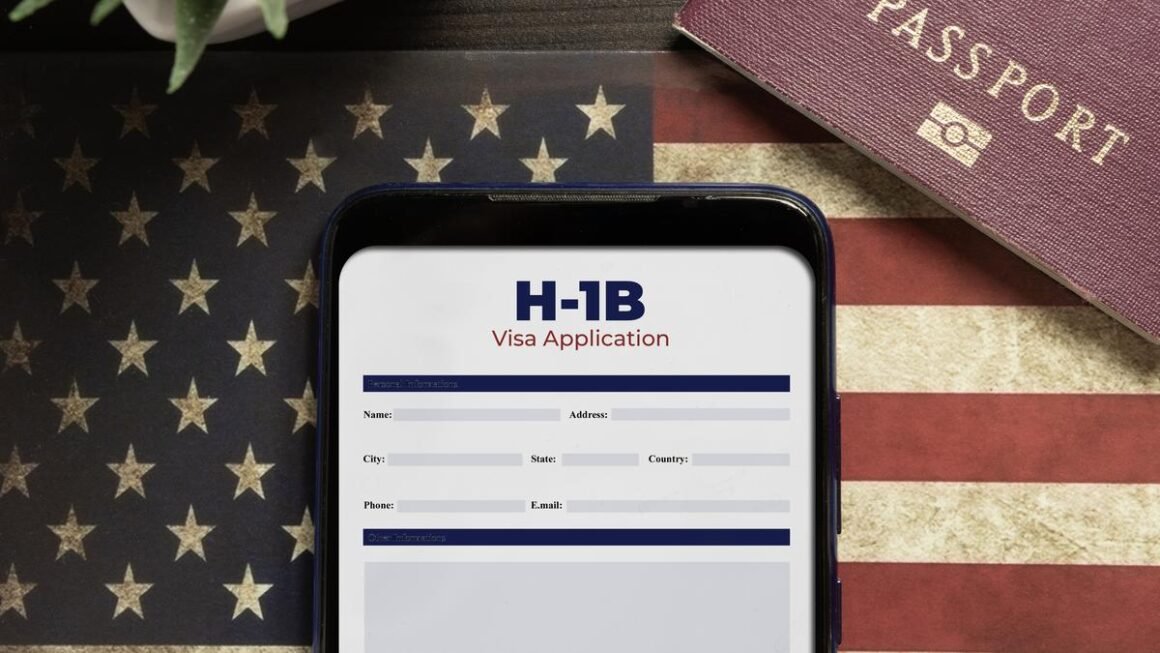
Punchline: The dream of working in America may now cost not just money, but also equality for young Indian women.
In September 2025, the U.S. government announced a shocking change to its immigration policy: a $100,000 one-time fee for new H-1B visa applications. While the move has rattled the global tech industry, it hits aspiring Indian professionals the hardest—especially young Indian women, who face unique structural and social barriers that could be magnified by this new rule.
The H-1B visa has long been a pathway to upward mobility for Indian youth. Every year, tens of thousands of Indian graduates, engineers, researchers, and healthcare workers apply for it. For them, it is more than a visa—it represents international exposure, financial independence, and a shot at career advancement in some of the world’s biggest companies. But now, the new visa fee threatens to transform this opportunity into a privilege accessible only to the wealthy or to those who already enjoy corporate sponsorship.
Although the official framework suggests employers must pay this fee, industry experts point out that U.S. companies will inevitably become cautious. They may reduce the number of sponsorships, demand stricter bonds, or simply favor employees they perceive as long-term investments. And in many cases, gender biases creep in silently, leading to women being passed over for their male counterparts.
For women from middle-class and small-town families, this policy could close the doors of global mobility. Educational loans, household responsibilities, and limited financial backing already make international opportunities a challenge. With an additional $100,000 burden, employers may hesitate to sponsor women candidates—viewing them as less cost-efficient compared to men, who are often perceived as more stable or long-term employees.
The disparity is sharper in STEM fields. Although more Indian women are entering technology and science, they remain underrepresented in top roles. Companies, faced with higher costs, may choose to allocate sponsorship to male employees who dominate leadership and high-visibility positions. This could widen the gender gap at the very moment when India has been making slow but steady progress in women’s participation in global careers.
There are also cultural realities. Many young Indian women face pressure to prioritize marriage or family over career, particularly after their mid-20s. In such cases, employers may hesitate to invest in them when visa sponsorship is extraordinarily expensive. For women, this means that personal choices and social expectations could combine with the visa fee hike to create an almost insurmountable wall.
The broader impact cannot be ignored. A system that prices out young women will reduce diversity in the global workforce, robbing U.S. companies of talent and India of representation. Families that once saw the H-1B as a stepping stone to prosperity may now encourage daughters to settle for safer, local opportunities. The psychological toll—knowing that ambition itself has become unaffordable—could be just as damaging as the financial burden.
What can be done? Policy experts suggest Indian authorities push back diplomatically, while universities and employers could create scholarship funds or corporate sponsorship programs to support underrepresented groups. Women’s advocacy groups are also calling for transparency in how employers absorb or share these costs, ensuring that female candidates are not silently sidelined.
The $100K H-1B fee is more than a bureaucratic hurdle—it is a test of who gets to dream big. For India’s young women, especially those striving to break stereotypes and carve their own paths, it is a reminder that opportunity is not just about skill and ambition, but also about systemic barriers. Unless safeguards are introduced, this policy will not only keep talented women out of the U.S. but also send a global message that opportunity is increasingly reserved for the privileged few.
In essence, the American dream is now at risk of becoming a male-dominated, wealth-driven reality. For young Indian women, it is not just the cost of a visa, but the cost of equality itself.
FOR MORE BLOGS – beyondthepunchlines.com

 Add to favorites
Add to favorites








